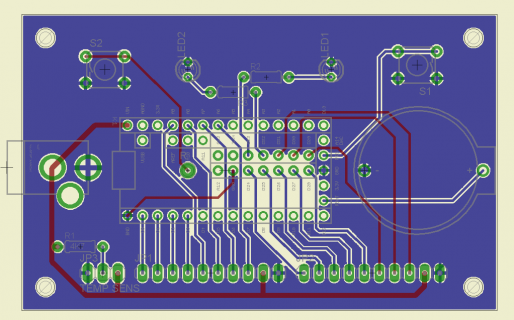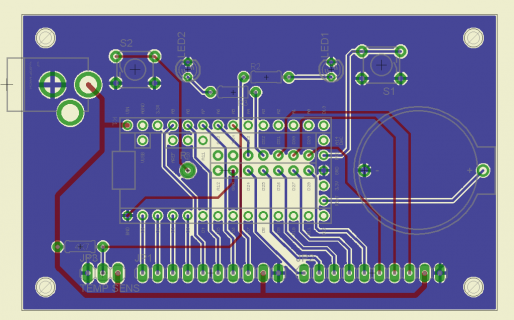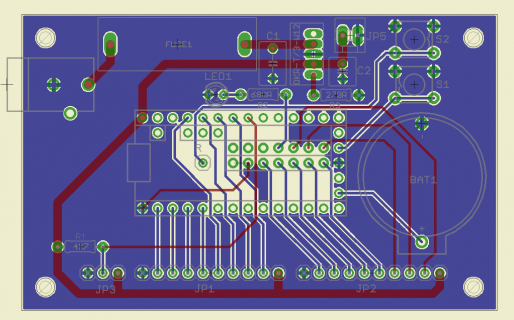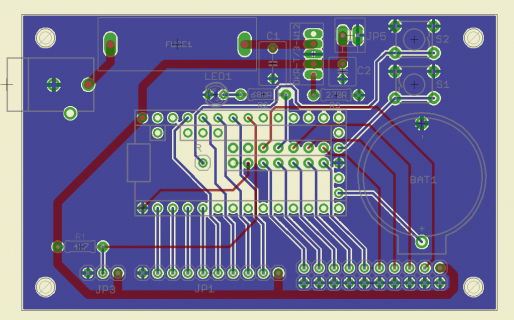Pointy
Well-known member
Hi guys,
As the weather was horrendous here yesterday, I did some more work on my project and started working on the PCB design. I am more of a software guy and while I have some very basic knowledge of electronics I wuld love some help with this part.
So my Teensy 3.1 is mainly being used to monitor various sensors and switch mains voltage devices on and off. I am using one of these 8 way relay modules. The relays on these modules are Songle SRD-05VDC-SL-C, which draw just over 70ma. I may want to add another bank of 8 in the future so I need to take this into account. I am also using the Wiz820+SD Adaptor, utilising both the ethernet and SD card. (Not sure how much current the Teensy 3.1 + adapter will use, any ideas?)
I want to power it from a single supply and was just going to use a 5v power brick connected to a DC jack on my board. I this wise or should I go for a slightly higher voltage supply and include a voltage regulator circuit on my board? If it's the latter can someone suggest the best components to use with a little schematic diagram? I am guessing the 2a would be enough, but maybe 3a to be extra safe.
Here's very rough first draft of the PCB...

Regards,
Les
As the weather was horrendous here yesterday, I did some more work on my project and started working on the PCB design. I am more of a software guy and while I have some very basic knowledge of electronics I wuld love some help with this part.
So my Teensy 3.1 is mainly being used to monitor various sensors and switch mains voltage devices on and off. I am using one of these 8 way relay modules. The relays on these modules are Songle SRD-05VDC-SL-C, which draw just over 70ma. I may want to add another bank of 8 in the future so I need to take this into account. I am also using the Wiz820+SD Adaptor, utilising both the ethernet and SD card. (Not sure how much current the Teensy 3.1 + adapter will use, any ideas?)
I want to power it from a single supply and was just going to use a 5v power brick connected to a DC jack on my board. I this wise or should I go for a slightly higher voltage supply and include a voltage regulator circuit on my board? If it's the latter can someone suggest the best components to use with a little schematic diagram? I am guessing the 2a would be enough, but maybe 3a to be extra safe.
Here's very rough first draft of the PCB...

Regards,
Les




